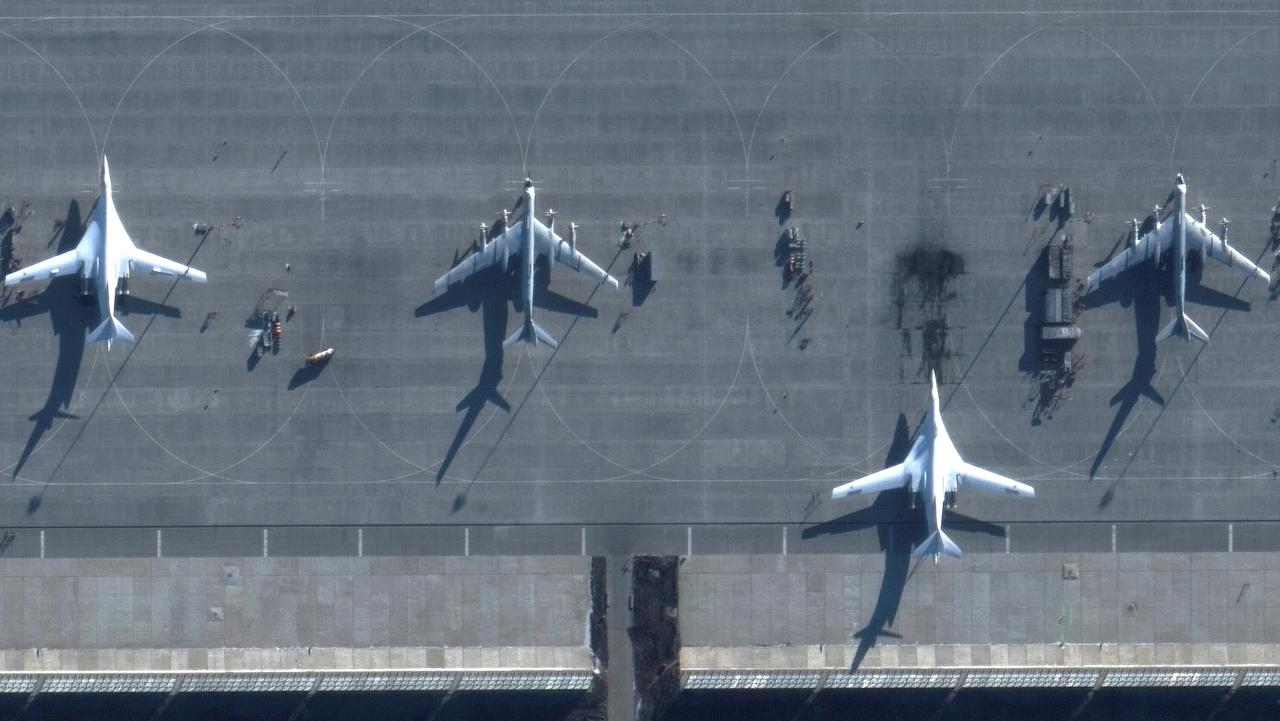Ukraine drone attack on russia – Ukraine drone attacks on Russia represent a significant escalation in the ongoing conflict, marking a shift in tactical approaches and raising crucial questions about the effectiveness of drone warfare in modern conflict. These attacks, targeting both military and civilian infrastructure within Russian territory, have prompted a complex interplay of military responses, diplomatic maneuvering, and international reactions. This analysis delves into the geographic scope, frequency, types of drones employed, impact, and the broader geopolitical implications of these actions.
The frequency and geographic reach of these attacks provide valuable insights into Ukraine’s evolving military strategy and capabilities. The types of drones used, their technological capabilities, and potential sources are all subject to ongoing investigation and debate. Moreover, the impact on Russian infrastructure, the psychological effect on the Russian populace, and the international responses to these events are critical elements in understanding the broader context of this conflict.
Geographic Scope and Frequency of Drone Attacks: Ukraine Drone Attack On Russia
Drone attacks against Russian territory have become a recurring feature of the ongoing conflict in Ukraine. Understanding the geographical distribution and temporal frequency of these attacks is crucial for assessing their strategic impact and effectiveness. This section examines the spatial and temporal patterns of reported drone incursions, correlating them with the proximity of the Ukrainian border.
Geographic Distribution of Drone Attacks
Mapping the reported locations of drone attacks reveals a pattern largely concentrated in regions bordering Ukraine. A hypothetical map, created using latitude and longitude coordinates (which would be populated with specific data from reliable sources such as news reports and conflict monitoring organizations), would visually represent the frequency and clustering of these attacks. For example, attacks concentrated near Belgorod, Bryansk, and Kursk oblasts would indicate a focus on regions with relatively close proximity to Ukrainian military operations.
Areas further inland would likely show fewer reported incidents. This visualization would clearly illustrate the spatial correlation between attack locations and the Ukrainian border.
Timeline of Drone Attacks
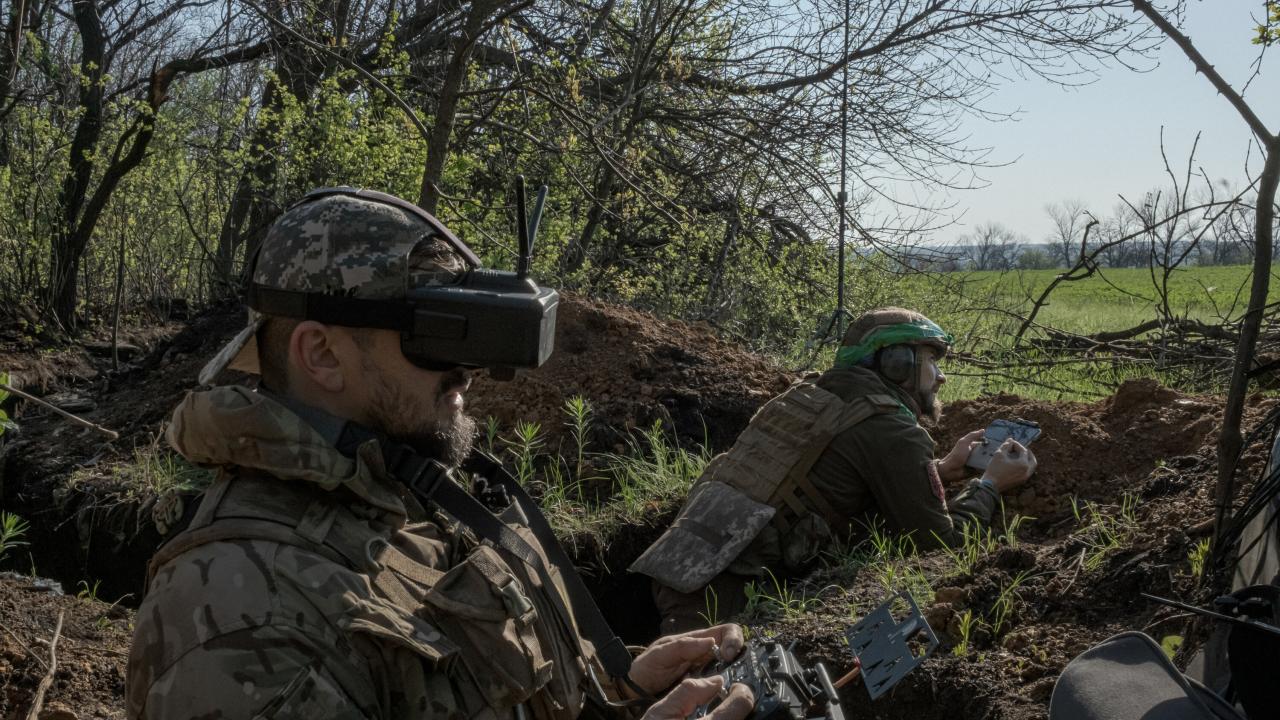
A timeline charting the frequency of drone attacks over the past year would highlight any significant trends or patterns. Data points would include the date, precise location (using latitude and longitude), and a brief description of each incident (e.g., target, reported damage, claimed responsibility). For example, an increase in attacks during certain periods might reflect shifts in Ukrainian military strategy or the availability of new drone technologies.
Conversely, a decrease could indicate a change in tactics, improved Russian countermeasures, or other factors influencing the frequency of attacks. Analyzing this data would allow for a deeper understanding of the operational tempo and potential evolution of this aspect of the conflict.
Correlation Between Attack Locations and Ukrainian Border
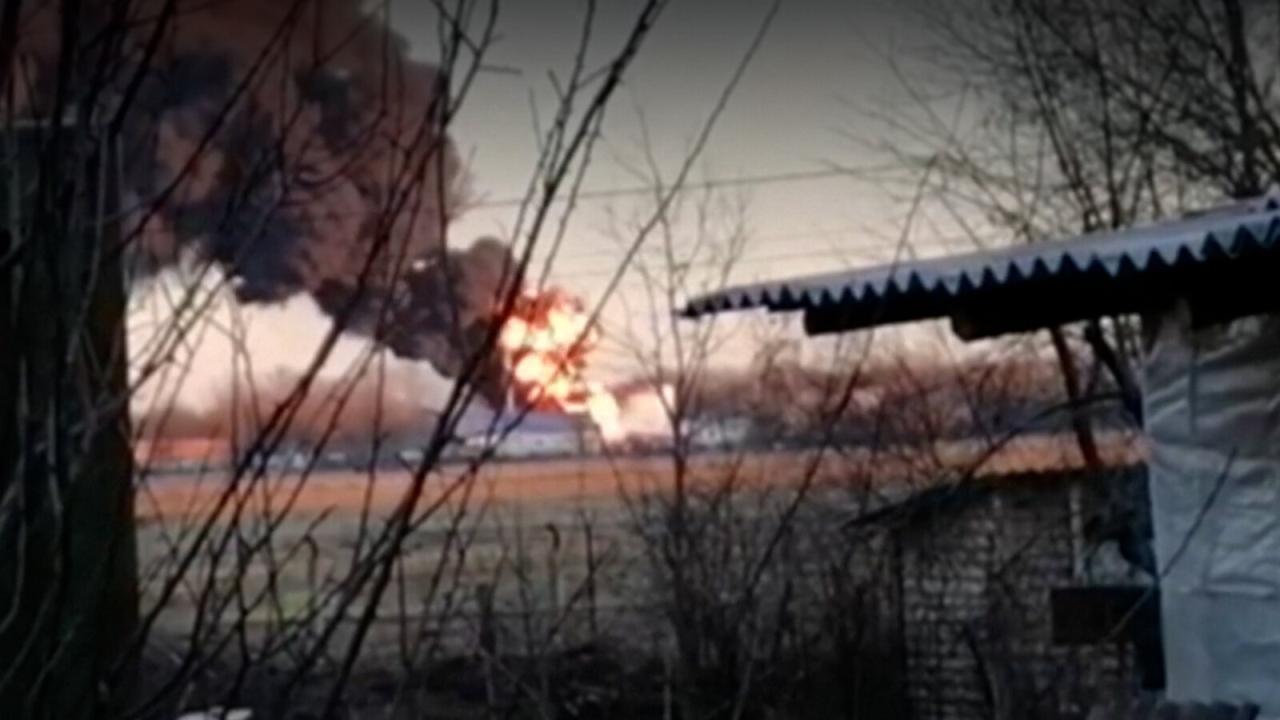
Analyzing the geographic distribution of drone attacks in relation to the Ukrainian border would reveal a strong correlation. Attacks are predominantly concentrated in regions close to the border, suggesting a logistical advantage for Ukrainian forces launching these operations. Discrepancies, such as attacks further inland, could be attributed to the use of longer-range drones, the involvement of different actors, or successful penetration of Russian air defenses.
Further analysis is needed to determine the precise nature of this correlation and any exceptions.
Types of Drones Used and Their Capabilities
The effectiveness of Ukrainian drone attacks hinges on the types of unmanned aerial vehicles (UAVs) employed and their technological capabilities. This section analyzes the different drone models likely used, their specifications, and how they compare to Russian air defense systems.
Types and Specifications of Drones
While precise identification of all drones used remains challenging due to operational security, reports suggest a mix of commercially available drones modified for military use and potentially some domestically produced models. Credible sources such as open-source intelligence reports and news articles mentioning specific models would be crucial in verifying this. For instance, reports might indicate the use of longer-range drones with increased payload capacity for carrying heavier explosives.
Detailed specifications, such as range, payload capacity, flight duration, and guidance systems would help to illustrate the capabilities of these UAVs. The use of swarm tactics involving multiple drones, even smaller, less sophisticated ones, could also be a significant factor.
Comparison with Russian Air Defense Systems
Comparing the capabilities of Ukrainian drones with Russia’s air defense systems is critical for understanding the effectiveness of the attacks. Russia deploys a range of systems, from short-range anti-aircraft guns to sophisticated long-range missile systems. However, vulnerabilities remain, particularly against smaller, faster, and more maneuverable drones. The limitations of radar systems in detecting and tracking smaller UAVs, coupled with potential electronic warfare techniques employed by Ukraine, could explain the success of some attacks.
Conversely, examples of successful Russian interceptions highlight the ongoing technological arms race in this domain.
Sources of Drones
The sources of the drones used in the attacks likely include a combination of domestically produced UAVs and foreign assistance. Ukraine has a growing domestic drone industry, and there are reports of Ukrainian engineers adapting and improving commercially available models for military applications. Foreign assistance from countries supporting Ukraine could also provide advanced drone technology or components, though the specifics of such aid are often kept confidential.
Analysis of drone wreckage, technological features, and publicly available information on military aid would be essential in determining the precise sources.
Impact and Consequences of the Attacks
The drone attacks have had significant consequences, extending beyond the immediate physical damage to encompass psychological and geopolitical implications. This section explores the various impacts of these attacks.
Recent Ukrainian drone attacks on Russian territory have highlighted the increasing sophistication of unmanned aerial vehicles in modern warfare. The technology behind these attacks is constantly evolving, and companies like Sky Elements, whose innovative drones you can explore at sky elements drones , are at the forefront of this advancement. This rapid technological progress significantly impacts the strategic landscape, influencing future conflict scenarios and prompting further development of counter-drone technologies.
Physical Damage and Casualties
Reports from reliable news sources and conflict monitoring organizations detail the physical damage caused by the drone attacks. This includes damage to infrastructure such as military bases, oil depots, and civilian infrastructure, as well as casualties. Quantifying the extent of this damage, using data from reputable sources, is vital for assessing the overall impact. Specific examples, such as the damage caused by a particular attack on a specific target, would illustrate the scale of these effects.
The accuracy of these reports should be considered, as information during wartime is often subject to propaganda and misinformation.
Psychological Impact
The drone attacks have a significant psychological impact on the Russian population and government. The constant threat of attacks, even if relatively small-scale, can erode public confidence in the government’s ability to ensure security. The attacks also serve as a symbol of Ukrainian resistance and capability, undermining the narrative of Russian military dominance. Analysis of public opinion polls, social media sentiment, and government statements would provide further insight into this psychological dimension.
Geopolitical Implications
The drone attacks have profound geopolitical implications for the ongoing conflict and international relations. They demonstrate Ukraine’s capacity to strike targets deep within Russian territory, potentially escalating the conflict. Conversely, they could also be seen as a way for Ukraine to maintain pressure on Russia without resorting to larger-scale military offensives. The international response to these attacks, as discussed in a later section, further shapes the geopolitical landscape.
Recent Ukrainian drone attacks on Russian territory have highlighted the increasing use of unmanned aerial vehicles in modern warfare. The technology involved is sophisticated, requiring advanced surveillance and targeting capabilities, much like the high-resolution imagery provided by the cobequid pass camera , which offers a different perspective on remote monitoring. These attacks underscore the evolving nature of conflict and the crucial role of technological advancements in shaping its trajectory.
Russia’s Response and Countermeasures
Russia’s response to the drone attacks has involved a range of countermeasures, reflecting the evolving nature of this aspect of the conflict. This section examines the effectiveness of these responses.
Methods of Countering Drone Attacks
Russia employs various methods to counter drone attacks, including air defense systems, electronic warfare, and other defensive strategies. These include deploying anti-aircraft artillery, missile systems, and electronic jamming systems to disrupt drone communications and navigation. The deployment of these systems varies geographically, with regions closer to the Ukrainian border likely having a higher concentration of defenses. Specific examples of Russian countermeasures, and their deployment locations, are needed to illustrate the country’s response.
Effectiveness of Countermeasures
Evaluating the effectiveness of Russian countermeasures requires analyzing both successes and failures. While some drone attacks have been intercepted, others have successfully reached their targets, suggesting limitations in Russia’s defenses. Factors such as the type of drone used, weather conditions, and the sophistication of Ukrainian tactics all influence the effectiveness of these countermeasures. Analyzing specific incidents, detailing the success or failure of Russian defenses, would provide valuable insights into this dynamic.
Public Statements and Actions, Ukraine drone attack on russia
The Russian government has responded to the drone attacks through a range of public statements and actions. These include diplomatic protests, military responses targeting alleged launch sites in Ukraine, and increased security measures in border regions. Analyzing these responses allows for a deeper understanding of Russia’s strategic calculations and its perception of the threat posed by these attacks. Specific examples of Russian public statements and military actions would provide concrete evidence of their response.
International Perspectives and Reactions
The drone attacks have drawn international attention, prompting diverse reactions from various countries and international organizations. This section summarizes these responses and explores the underlying geopolitical factors.
Summary of International Responses
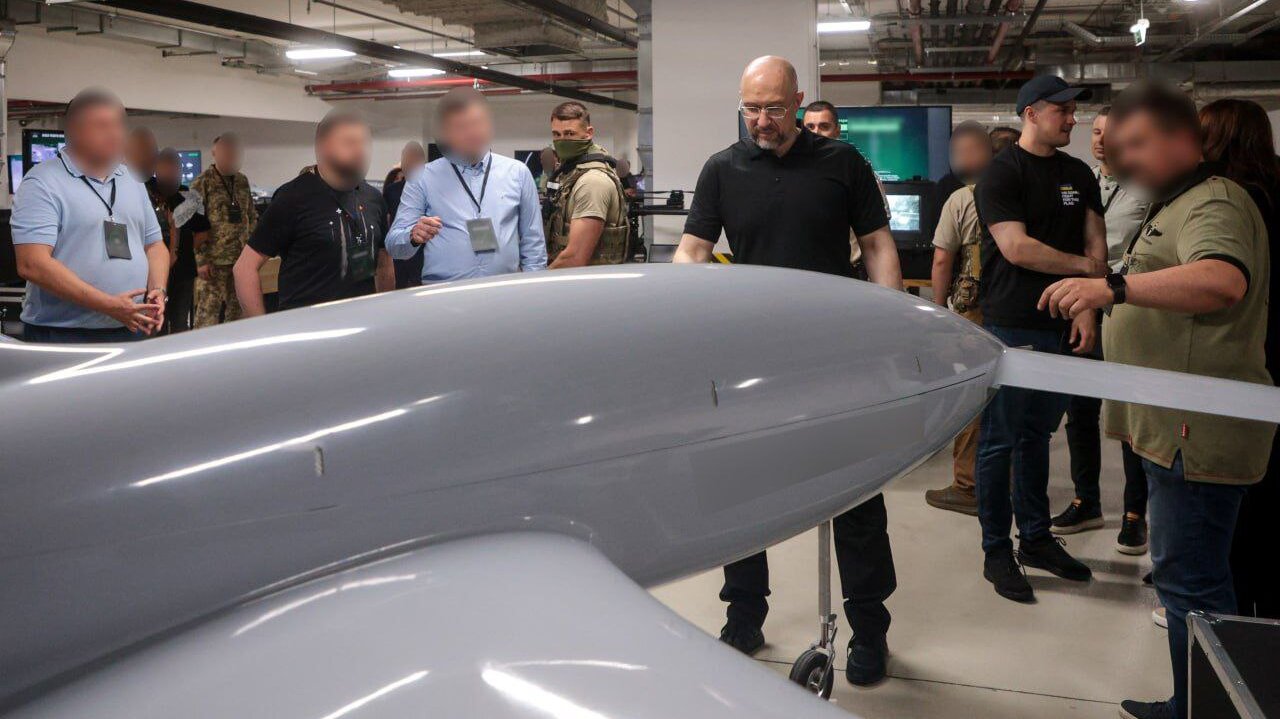
A table summarizing the responses of various countries and international organizations would be highly informative. The table would include columns for country/organization, response type (e.g., condemnation, support for Ukraine, calls for de-escalation), and the date of the response. This would offer a concise overview of the international community’s reaction to the drone attacks.
| Country/Organization | Response Type | Date of Response |
|---|---|---|
| Example: United States | Condemnation of attacks, continued military aid to Ukraine | [Date] |
| Example: European Union | Statement of concern, sanctions against Russia | [Date] |
| Example: United Nations | Call for de-escalation and peaceful resolution | [Date] |
Comparison of Reactions Based on Geopolitical Relationships
The reactions of different countries often reflect their geopolitical relationships with Ukraine and Russia. Countries with close ties to Ukraine tend to express stronger condemnation of the attacks and provide greater support to Ukraine. Conversely, countries with closer ties to Russia may downplay the significance of the attacks or offer more muted responses. Analysis of these differing responses would reveal the complexities of international politics during this conflict.
Impact on International Efforts to Resolve the Conflict
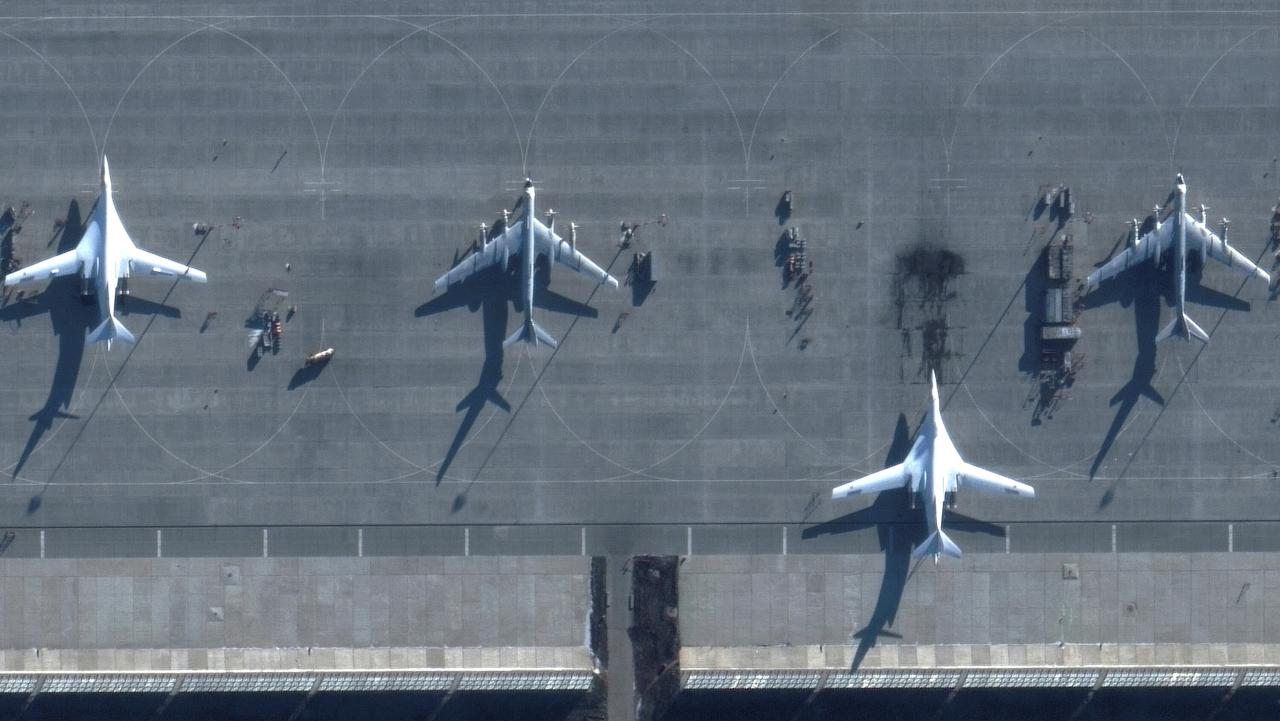
The drone attacks have the potential to impact international efforts to resolve the conflict, including peace negotiations and humanitarian aid. The escalation of tensions caused by these attacks could hinder diplomatic efforts and make it more difficult to achieve a peaceful resolution. Conversely, the attacks could also serve as a catalyst for renewed diplomatic engagement, particularly if they lead to a change in the dynamics of the conflict.
The ongoing series of Ukrainian drone attacks on Russia underscores the evolving nature of modern warfare and the significant challenges posed by asymmetric conflict. The attacks highlight the increasing importance of drone technology in shaping military strategy and the complex geopolitical ramifications of such actions. While the effectiveness of these attacks remains a subject of ongoing assessment, their impact on the conflict’s trajectory, international relations, and the psychological landscape within Russia itself is undeniable and warrants continued scrutiny.
Detailed FAQs
What is the estimated cost of these drone attacks to Ukraine?
Precise figures are unavailable due to the classified nature of military spending and the diverse sources of drone technology. However, estimates vary widely depending on the type of drone and the cost of acquisition, maintenance, and operational support.
How does Russia’s response compare to other countries’ responses to drone attacks?
Russia’s response involves a combination of air defense systems, electronic warfare, and public statements, but the effectiveness varies. Other countries facing similar threats often employ a combination of these methods, with varying degrees of success, depending on the scale and sophistication of the attacks.
What international laws govern the use of drones in this context?
Recent Ukrainian drone attacks on Russian territory have highlighted the increasing sophistication of unmanned aerial vehicles in modern warfare. The capabilities showcased raise questions about the technology involved, and one company pushing the boundaries of drone technology is Sky Elements Drones, offering advanced solutions like those found at sky elements drones. This technological advancement underscores the evolving nature of conflict and the critical role drones now play in shaping geopolitical events.
The legality of drone strikes is complex and governed by international humanitarian law, which emphasizes the principle of distinction between combatants and civilians, and proportionality of force. The application of these principles in the context of the Ukraine-Russia conflict remains a matter of ongoing debate and interpretation.
